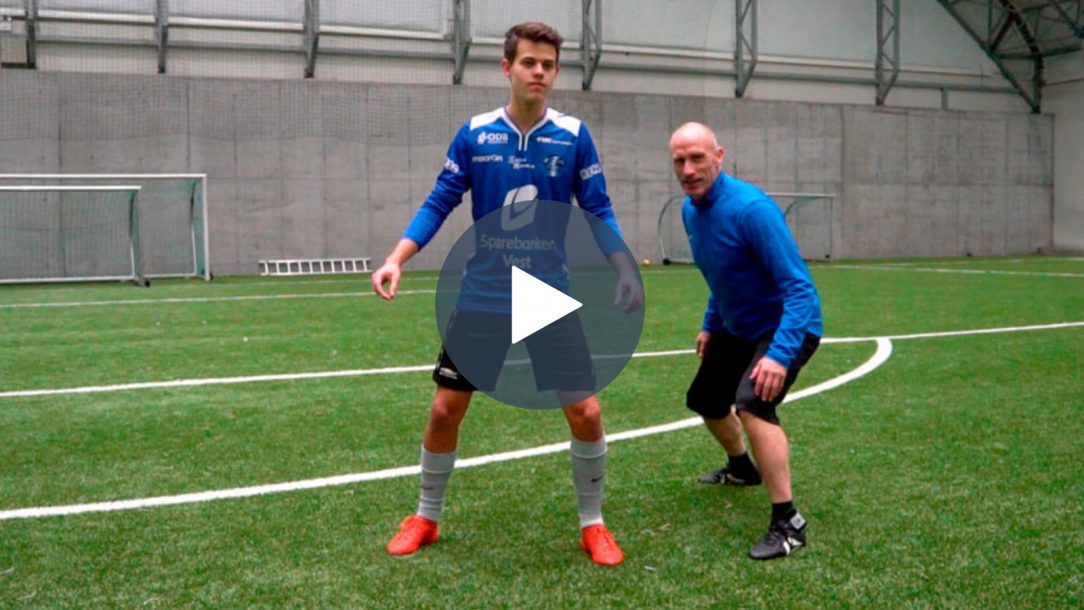Before we dive into the technicalities, we need to develop a basic understanding of what we are referring to when we talk about a defending position.
When we assess the performance of a defender on the pitch, we are generally interested in their body position relative to the attacker. A defender’s body position incorporates three factors: Leg, Feet, and Torso (LFT).
Let’s take a look at an example. In Chapter #7 of my eBook “Positioning Your Feet for Success” we examined how players have many options available to them in terms of how they position their legs, feet and torso.
When we progress to the chase position, things can become more complicated because, in addition to variations in the leg and torso positions, we also have endless possibilities as to how to position our feet.
A defender’s body position incorporates three factors: Leg, Feet, and Torso (LFT).
Have you noticed the role the position of your feet plays in the chase defending position?
If there is one foot position that is worth studying and perfecting it is this, because you can use this foot technique to:
- Mark wrong-facing and right-facing attacking players in the chase defending position
- As a 1v1 technique in the slanted defending position
- As a 1v1 technique in the side-on defending position
- As a 1v1 pressing technique (swordsman step)
If there is one foot position that is worth studying and perfecting it is this – the chase position.
What is the Chase Defending Position?
The Chase Defending Position. Photo: Giske Defending.
The chase defending position involves using both a pressing and marking technique:
When you execute the pressing technique, you approach the attacker with short “swordsman steps” while considering tackle opportunities; however, you also ensure that you are ready to run with the attacker at a moment’s notice.
The marking technique involves positioning yourself on the side of the attacker (see image) and preparing to win the ball before he or she receives it (in front) or to run with the attacker in the defending direction if he chooses this alternative.
The chase position involves using both a pressing and marking technique.
Strengths:
- It gives you good control of the lengthwise (forward and backward) movements. You can choose which direction you want to work in (in a moment) by switching the position of your feet.
- The biggest advantage is that it allows you to move in a completely different and more powerful way than the frontal defending position (conventional technique), which limits you to move forwards and backwards lengthwise.
It allows you to move in a completely different and more powerful way than the frontal defending position.
Weaknesses:
- It might take some time to automate a completely new technique.
- This technique is effective but energy intensive since you will be in continuous motion (you are working forth and back).
- The movement (turning) in the defence direction (backwards) is challenging if the quality of your LFT is lacking.
Best for:
The chase defending position is a particularly useful technique that is suitable for all players, but especially defensive players. This technique enhances your performance and adds an additional dimension to your defending game.
The chase position adds an additional dimension to your defending game.
What is So Special About the Chase Defending Position?
The chase defending position allows you to exert maximum control in the longitudinal direction. If your LFT quality is good, you can move quickly in either the attacking or defending directions. Pointing your front foot and body in the direction you may need to move, for example, will help you move in this direction quickly and easily when you need to do so.
In practice, when you are in this position, you are ready to run in either direction. However, you are not committed to executing play in that direction and, if you need to, you can turn and run in the other direction at a moment’s notice simply by changing the stance of your feet. Essentially, you will also be able to turn and run in the other direction without first having to change your stance if your LFT quality is good because you will have a large range of motion in the hip.
You can turn and run in the other direction at a moment’s notice simply by changing the stance of your feet.
For example, you may be ready to break a ball in front of a wrong-facing attacker and within fractions of a second be ready to run in the defence direction.
The chase defending position is a really powerful technique that will give you many advantages in many situations.
However, despite its effectiveness, it remains one of the least commonly used defensive techniques in today’s game.
The majority of players tend to move themselves into a frontal defending position. As mentioned earlier, this position may prevent you from readily moving in the longitude direction because the frontal defending position is very static in comparison to the chase defending position in many situations.
Despite its effectiveness, the chase position remains one of the least commonly used defensive techniques.
What Technical Details do You Need to Perfect to Execute the Chase Defending Position Well?
Before we talk about the chase defending position in more depth, let’s get one thing straight: the anatomical relationships and technical principles are the same for all defending positions.
The anatomical relationships and technical principles are the same for all defending positions.
As such, before you start to focus on advanced skills, it’s important that you gain a basic understanding of the anatomical issues and details (as mentioned above) so you are capable of testing your LFT quality or that of your team in different defending positions.
When you have developed an in-depth understanding of the anatomical factors that support a good position, you will find it easier to understand the positive and negative domino effects of LFT quality.
Focus One: Leg Position Quality
Leg width varies from player to player. Generally speaking, however, it is important to maintain a relatively wide leg position at all times because this will give you the following:
- Better balance
- Better force development
- A longer and more effective first-step
This results in positive working conditions and a better performance.
Generally speaking, it is important to maintain a relatively wide leg position.
Focus Two: Quality of Feet Position
The LFT position is a new theme and a secret that was presented in my previous eBook. In this defending position, you need to position your front foot in such a way that supports the following:
- A large range of motion in the hip (an open pelvis) that allows you to move freely in both directions. This also makes it possible to lower your centre of gravity correctly.
- A stable stance. This will support your balance and enhance your drive (push) if you want to move in the opposite direction.
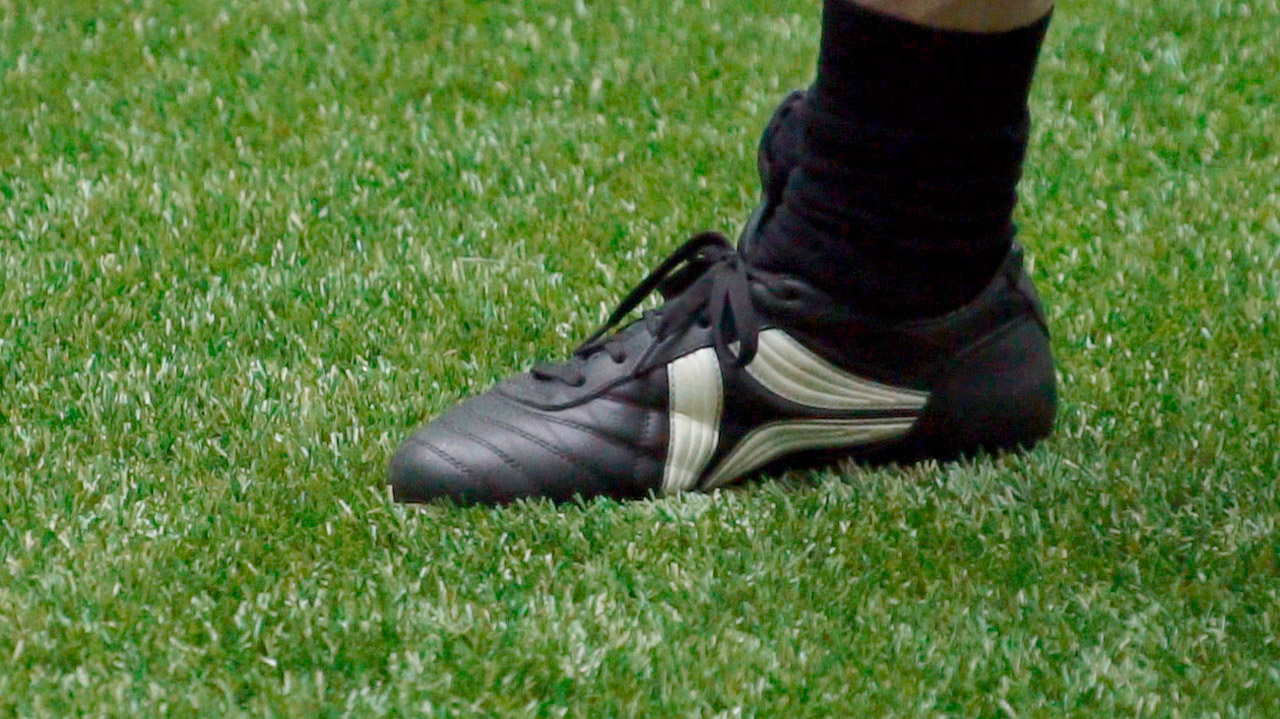
Front foot. Photo: Giske Defending.
To open your pelvis and get a huge movement reflected in the hip, your foot must be pointing forward; however, at the same time, your foot should be turned slightly inward for it to stabilize (“lock”) the ankle joint (see the image above).
The rear foot should ensure you have a stable suspension that improves your balance and helps you get a strong push off when you start to run.
To stabilize your stance, you must adopt a perpendicular stance position that is relative to the running direction, moving the heel slightly backwards so that the foot is turned marginally inward.
An optimal front foot position gives you a stable stance and a large range og motion in the hip.
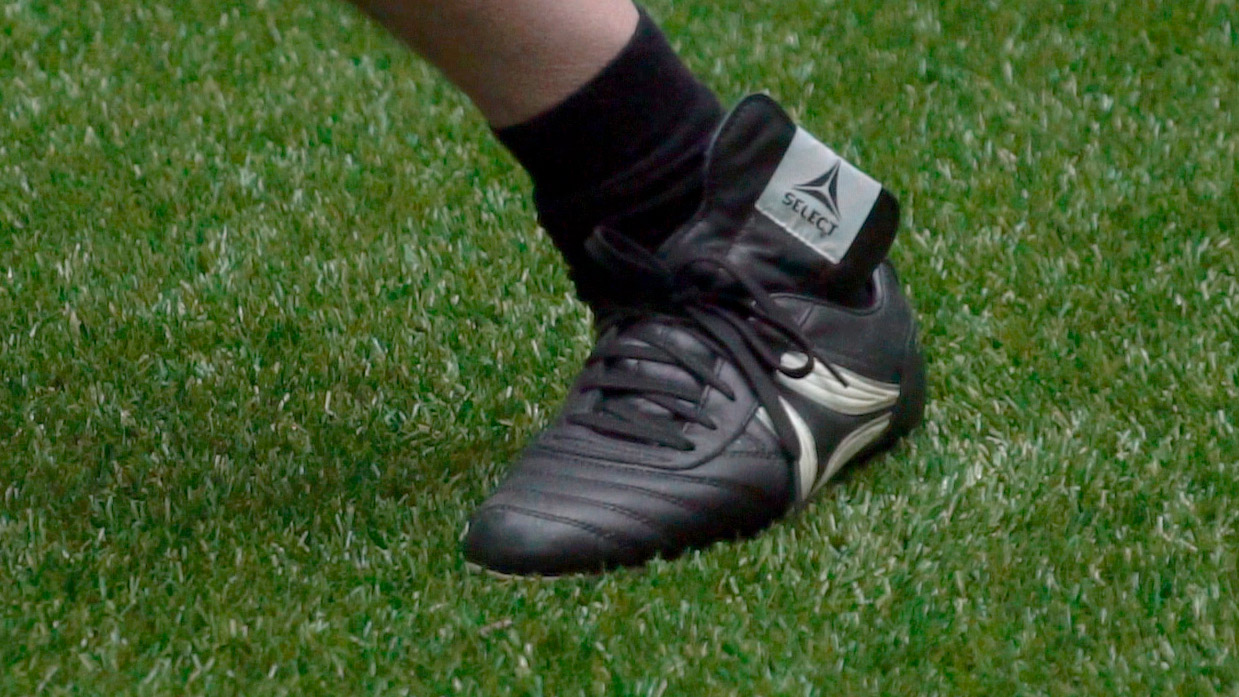
Rear foot. Photo: Giske Defending.
Now you have the best working conditions to run in both directions!
An optimal rear foot position improves your balance and helps you get a strong push off when you start to run.
Third Focus: The Quality of the Body Position
When your stance is optimal, you will not have any problems lowering your centre of gravity correctly. Your centre of gravity will then be displaced vertically, and your torso will be relatively straight.
Another great advantage of the chase defending position is that you can make the “strong” direction even stronger. You do this by leaning your upper body toward the running direction, which will allow you to get a good strong start. As you do so, your heel will automatically lift slightly off the ground, which will result in great tension in the leg muscle and optimal acceleration.
A great advantage of the chase defending position is that you can make the “strong” direction even stronger.
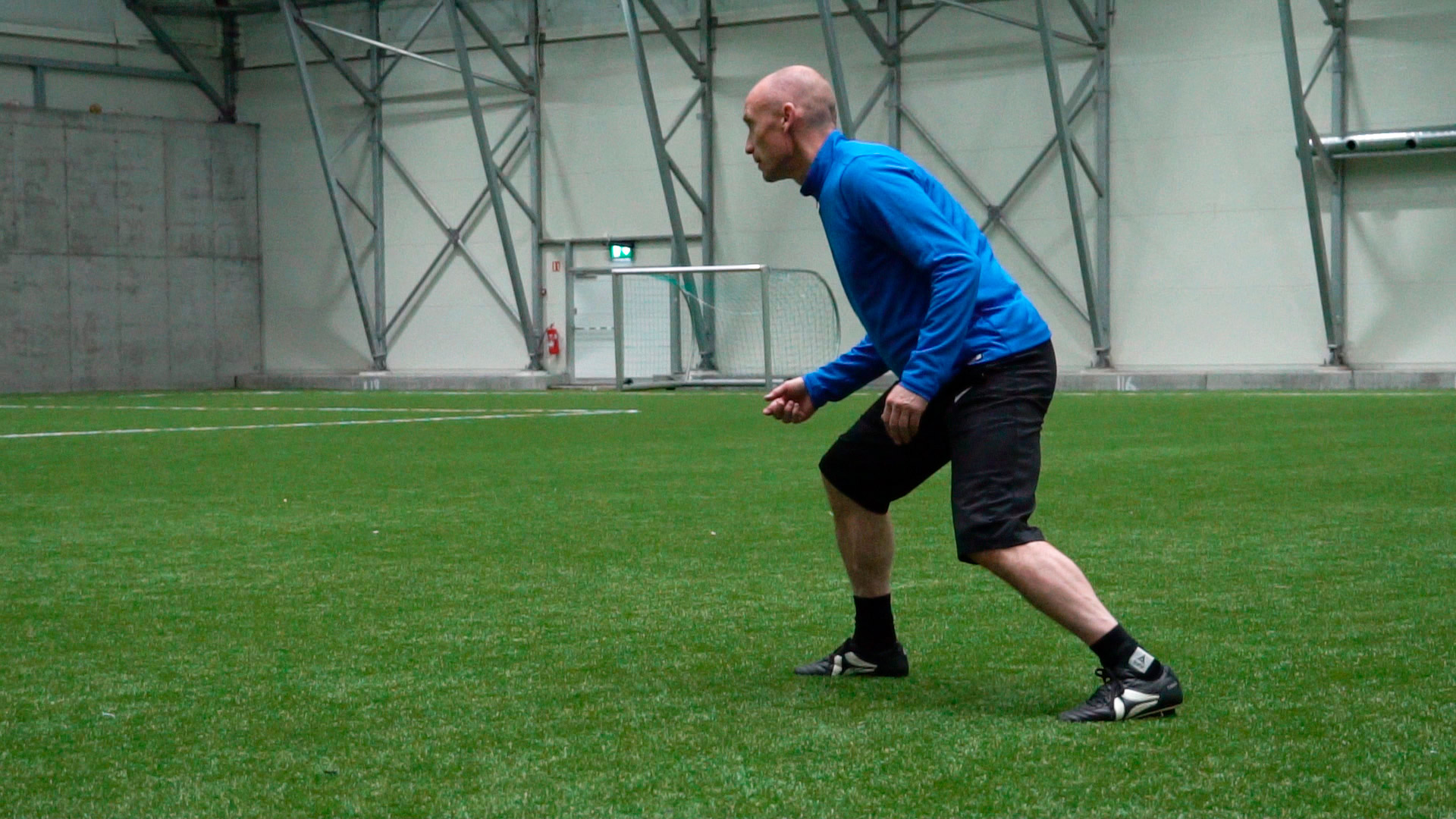
Chase position (offensive). Photo: Giske Defending.
By leaning your upper body forward, the heel will automatically lift slightly and optimize acceleration.
The price you will inevitably have to pay for positioning yourself in such a way as to make the most important direction stronger, is that the opposite direction will naturally be weaker.
Exercise
It’s really important that you test and feel the difference between the chase defending position and the frontal defending position.
Coaches can help players to do this by putting six players in a line. Three players should assume the chase defending position and the remaining three should assume the frontal defending position (alternated). Now you can arrange different 10-meter sprint competitions to both sides (forward and backward).
It’s really important that you test and feel the difference between the chase and the frontal position.
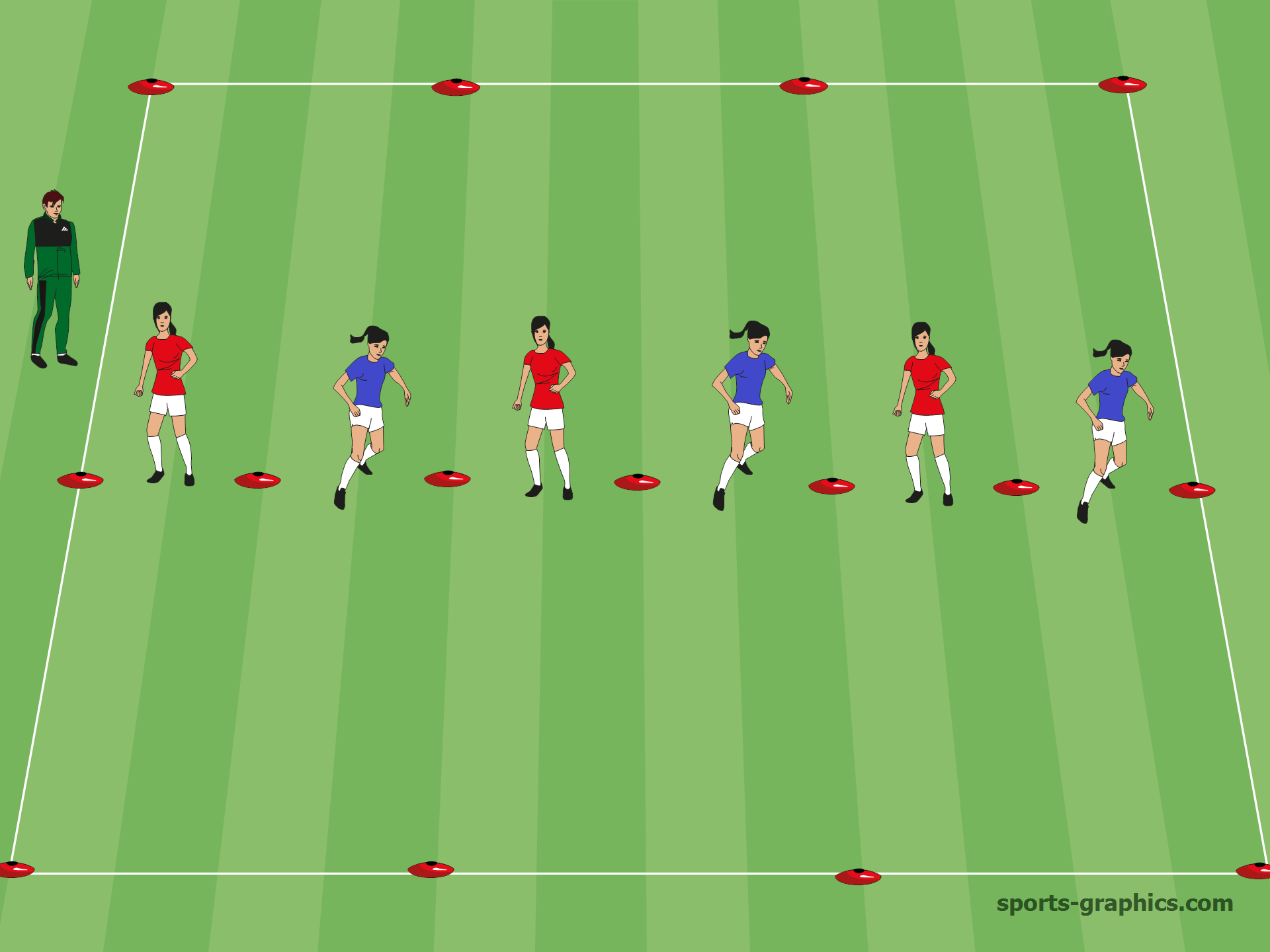
This simple test is fun because it allows the players to discover the power of the chase position.
Figure: Giske Defending. Credit: www.sports-graphics.com
First, the players should be challenged to run 10 meters in the forward direction (whistle), then 10 meters (from the same stance) in the backward direction. The third (and most interesting) challenge, will be a random competition in which the players are given quick and unexpected directions as to which direction to run in. For example, if the coach shouts “one” they run as fast as possible in the forward direction or if he or she calls “two” the players run 10 meters in the backwards direction.
This simple test is fun because it allows the players to directly experience the strengths of the chase defending position and it will probably present the aha! experience for both players and coaches at all levels.

